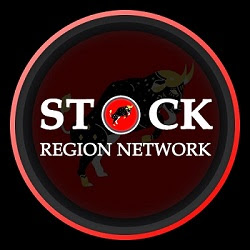
© Reuters. Motor Commerce Affiliation NSW, Steady Improvement Supervisor, Anthony Tomassetti, appears to be like at an electrical automobile mannequin used for up-skilling mechanics in Sydney, Australia, Could 1, 2023. REUTERS/Jill Gralow
2/4
(This Could 17 story has been corrected to say the rollout of chargers began small attributable to grid points, not scaled again attributable to grid points, and adjustments month to October, not November, in paragraph 18)
By Lewis Jackson
SYDNEY (Reuters) – Australians are beginning to purchase electrical autos in massive numbers, and the federal government is making an attempt to speed up the adoption of cleaner automobiles, however business executives say putting in chargers quickly sufficient to satisfy the increase is not going to be straightforward.
Environmentally acutely aware Australians eager for electrical autos received a lift final month when the federal government introduced plans to set automobile emissions requirements within the final developed nation bar Russia with out them, to assist repair a scarcity of EVs.
However public charging infrastructure stays sparse and under-powered by international requirements, in response to Worldwide Power Company knowledge, a possible deterrent for mass EV takeup in an enormous nation the place chargers stay scarce outdoors cities.
Australia has lower than a 3rd the variety of public chargers for each EV on the street in contrast with the worldwide common, regardless of being residence to one of many world’s most profitable charger producers, Tritium DCFC.
Challenges acquiring tools, delays plugging public chargers into the grid and shaky economics imply a mass build-out can’t be performed in a single day, business executives mentioned.
“All of that takes a very long time, so you will not bodily see chargers popping up in every single place over the following yr,” mentioned Carly Irving-Dolan, chief govt of NRMA Power and Infrastructure.
NRMA, a motoring companies organisation, is partnering with authorities to construct 135 charging websites throughout the nationwide freeway community over the following two to 3 years, including to the two,392 websites presently accessible round Australia.
After a decade below a conservative authorities that opposed EV adoption, the nation’s Labor authorities, which received energy a yr in the past, has launched a nationwide EV technique and doubled funding for cleaner transport to A$500 million ($339 million).
Electrical autos gross sales are already trending up, accounting for 8% of all automobile gross sales in April, up from 1.1% a yr earlier.
DEMAND UNCERTAINTY
Regardless of the federal government’s EV push, uncertainty stays over how powerful its automobile emission requirements might be.
The danger is weak requirements depart Australia a dumping floor for soiled automobiles, restrict the provision of latest EVs and undermine the economics of cost operators, mentioned Geoff Brady, chief working officer at electrical charger operator Evie Networks.
“We’re constructing infrastructure prematurely of demand to assist the transition. If the automobiles aren’t on the street, that is a threat for our economics,” Brady mentioned.
If the brand new requirements work to incentivise automakers to import ample clear automobiles, Australians will lastly see a wider vary of EVs in a market the place roughly half of all EVs bought in 2022 have been made by Tesla (NASDAQ:).
To assist recover from the cloudy economics of putting in chargers, the federal and state governments have been serving to fund rollouts, together with backing NRMA and Evie Networks.
PLUGGING IN
Australia’s plentiful sunshine and the world’s highest per capita uptake of rooftop photo voltaic means residence charging will not be a serious downside. The problem is the growth of public chargers, particularly in regional areas, the place the ability infrastructure to assist quick chargers is commonly scarce or absent.
The nation’s public chargers are usually underpowered, with 0.5 kilowatts of public charging per EV versus a median 2.4 kw worldwide.
Growth of public chargers is gradual as operators face lengthy delays connecting to the grid. An Evie report filed to the federal government funding administrator in October mentioned the method of connecting to the grid was “costly and inefficient”.
BP (NYSE:) is aiming for roughly 300 chargers throughout its petrol stations in Australia by the top of 2024. The rollout, which started final October, began with a single 75kW charger per website partly due to points getting extra capability from the grid, mentioned Andrew Worboyes, EV operations supervisor at BP Pulse.
Putting in a number of chargers or high-powered items can add as much as 12 months to a venture, and big international demand means as much as 18-month waits for ultra-fast chargers ordered right this moment, he mentioned. Irving-Dolan mentioned NRMA had four- to six-month waits.
“The lead instances are one of many greatest issues that the typical punter who buys an EV and expects to see a quick charger in every single place would not perceive,” Worboyes mentioned.
Quite a few research have to be performed to ensure chargers, which frequently use as a lot energy as a number of houses or companies, don’t dim the lights for current clients, mentioned Ausgrid Chief Buyer Officer Rob Amphlett Lewis, which runs the most important transmission community in New South Wales, Australia’s most populous state.
“It is just like the introduction of mass air-con within the ’90s and early 2000s, it’s going to take large funding,” Lewis mentioned.
($1 = 1.4743 Australian {dollars})
from NYSE Updates – My Blog https://ift.tt/zIE8jUf
via IFTTT



No comments:
Post a Comment